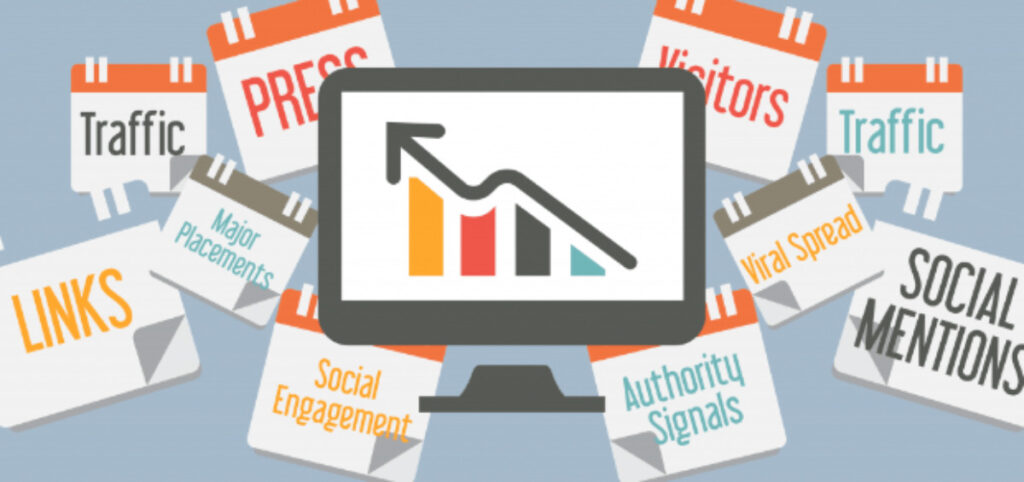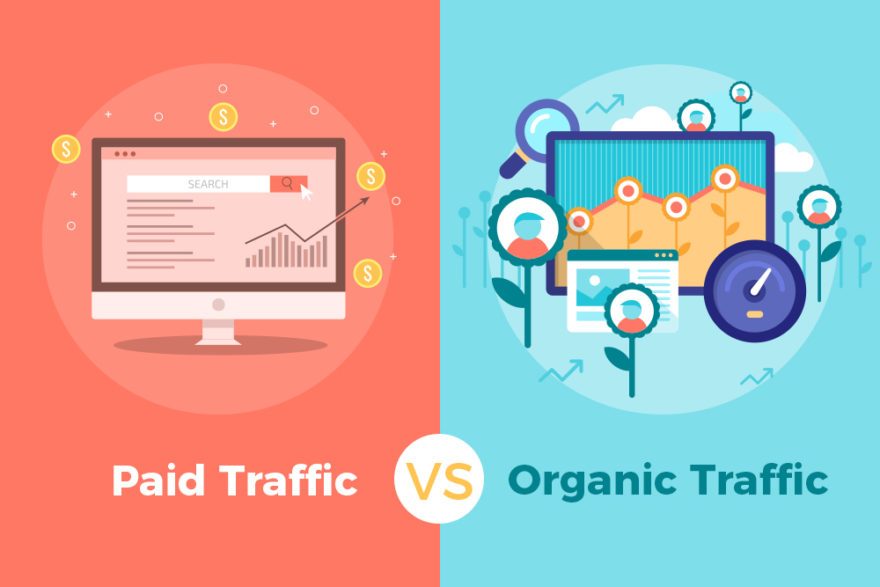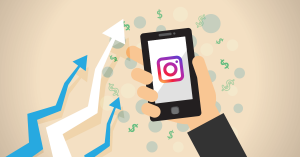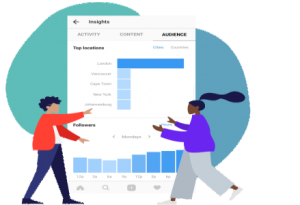Getting traffic on social media can be a hard process. If you’re running a social media campaign, then you’re probably going to have paid and/or organic traffic on your site.
However, should you be using paid or organic traffic? There is a lot of online chatter about which type of approach is better for your social media campaign.
As a marketer, you understand the importance of both paid and organic social media traffic. But how much effort and money should you devote to each?
In this post, we’ll look at the pros and cons of paid and organic traffic on social media to help you make informed decisions. We’ll also provide tips on how to measure the success of your campaigns. Continue reading to find out more.
Table of Contents
What are paid and organic traffic, and what are they used for?
Neither organic nor paid social media, on their own, will yield the desired results. Ideally, a combination of both is what you should pursue, with the emphasis tilting one way or the other over time.
To determine how to proceed it’s important that you understand the differences between paid and organic. Then, depending on your marketing goals, you will be able to pick the best approach that uses both organic as well as paid strategies.
Paid Traffic

Paid traffic is one of the most common online marketing strategies used by individuals and businesses to spread their message and drive traffic through their sales funnels.
Paid traffic comes in various forms, but the most popular is pay-per-click (PPC) traffic. The advertiser pays each time someone clicks on their ad, as the name implies.
Paid traffic can be an excellent approach to get your business in front of people who are already interested in what you have to offer. It can be a very cost-effective strategy to market your business because you just pay for results (clicks).
Paid Traffic Pros
- Paid search results are immediate – you can start seeing results as soon as you launch your campaign.
- You have complete control over your paid search campaigns – you can change your keywords, ad copy, and bid amounts at any time.
- You can target your ads very specifically using things like demographics, interests, etc.
- Paid search is very measurable – you can track everything from click-through rate (CTR) to conversion rate so you can easily see what’s working and what isn’t.
Paid ads can generate a lot of traffic quickly and easily. Simply create the campaign, choose where you want it to show, and make it live.
Paid Traffic Cons
- Paid search can be expensive, especially if you’re in a competitive market.
- There’s always the risk that your competitors will outbid you for your own keywords.
- Your ads will stop appearing as soon as you stop paying for them.
- Paid search requires ongoing management and optimization to be effective.
Organic Traffic

Organic traffic, on the other hand, is generated by unpaid posts, stories, blogs, and other content that appears on social media platforms such as Facebook, Instagram, Twitter, and LinkedIn.
Organic content can be an excellent approach to raising brand awareness and building relationships with prospective clients. It is also less disruptive than paid advertisements.
Organic Traffic Pros
- The most obvious pro of organic traffic on social media is that it’s free. You don’t have to pay for each click or impression as with paid ads.
- Organic traffic is also more likely to convert than paid traffic. This is because people who find your business organically may be further along in the buyer’s journey; they’re actively searching for information related to your business, product, or service.
- Organic social media marketing campaigns are more sustainable in the long run than paid ads. Once you build a following, you’ll continue to get organic traffic as long as you maintain the quality of your content. This is not the case with paid ads, which need to be continuously paid for.
Organic Traffic Cons
- It can take months or even years to see results from Organic traffic.
- To get the most out of organic social media content, you need to pair it with investing time and resources into search engine optimization (SEO). This includes keyword research, link building, and content marketing.
- The top organic spots on SERPs are limited (there can only be 10), which means increased competition for those coveted positions.
Read More: Facebook Content Strategy Tips & Ideas for 2022
Paid vs Organic Traffic: Which is Better for Your Business?
The answer is determined by your business’s goals and objectives. If you need to raise brand awareness or create leads quickly, paid traffic may be the way to go. Organic traffic, on the other hand, is generally a better alternative if you’re looking for long-term growth. There’s a considerable possibility your business would profit from both, but the relative resources you put into each strategy can be determined by weighing the pros and cons of each.
Both options have their pros and cons:
- Both require ongoing management and optimization: Otherwise, your return on investment could be negative.
- Paid traffic offers consistent and reliable returns: Since paid traffic gets more impressions from potential new buyers, they generally perform better than organic results.
- Organic content is free (aside from the time it takes to create, post, and manage it).
- Paid traffic can be disruptive: Ads can be intrusive and may put potential customers off your brand.
In the end, if you’re not sure where to start, try experimenting with both paid and organic social media campaigns to see what works best for you.

How to Measure the Success or Failure of paid and organic traffic
An analytics program is required to identify whether specific content from your organic social media strategy is doing well and the ROI compared to paid ads. Use a combination of ad spending and organic content to determine the optimal formula for dividing your resources and then assess the results.
Here are some of the main ways to measure the performance of your paid and organic content.
Reach
Reach refers to a number of different indicators that tell you what the size of your audience is and what share of people have seen your content. There are different types of Reach KPIs. These include:
- The total number of your followers.
- The total number of impressions that your posts receive.
- The reach of your posts i.e. the number of unique accounts that have seen them.
- The web referral traffic that your posts generate.
Engagement
Like reach, engagement is a broad category. It includes clicks on your posts, likes, shares, comments, and mentions. By measuring engagement, you will be able to determine how many people are interacting with your content and if it actually works.
Click-through rate (CTR)
CTR refers to the number of times someone clicks on your content, and follows a link, in comparison to the total impressions the post has received.
To calculate CTR simply divide the total number of link clicks by the total number of post impressions. Multiply the resulting number by 100 to determine your CTR percentage.
This is a good indicator of how compelling your content and offer are to your audience, whether they’re paid or organic. A high CTR means that it is effective and that you have successfully targeted your audience.
Cost-per-click (CPC)
CPC is the cost that you pay per individual click on your ads. Focusing on CPC, instead of total spending, can shed light on whether your ads are efficient or not.
Monitoring CPC also helps you forecast how your ads will impact your budget. And what’s more, analyzing your cost-per-click will help you determine which ad messaging is winning and provides the greatest value.
Your platform’s ad manager will provide you with the CPC value.
Conversion rate (CR)
This metric can also refer to a number of different actions. Conversions can be any action that you define as the goal of your organic or paid content – whether it’s visiting your site, purchases, subscriptions and sign-ups, contact submissions, and more. Regardless, by monitoring the rate at which followers complete this action, you will have an idea of what your CR is.
Conclusion
As you can see, there are pros and cons to both paid and organic traffic. So, which is best for you? That relies on a variety of things, including your budget, time frame, and marketing objectives. Some businesses concentrate solely on organic traffic, while others benefit from a combination of paid and organic traffic. It is ultimately up to you to determine what is best for your business. Just keep in mind that each method has its own set of pros and cons that should be considered before making a selection.




